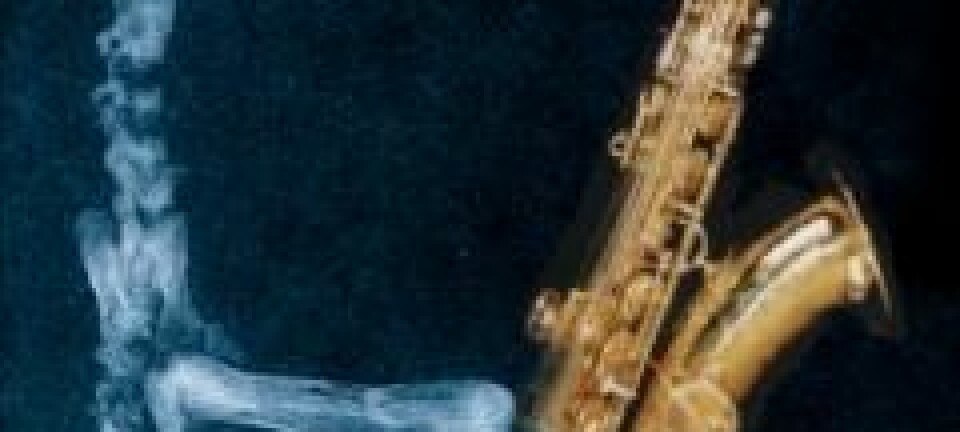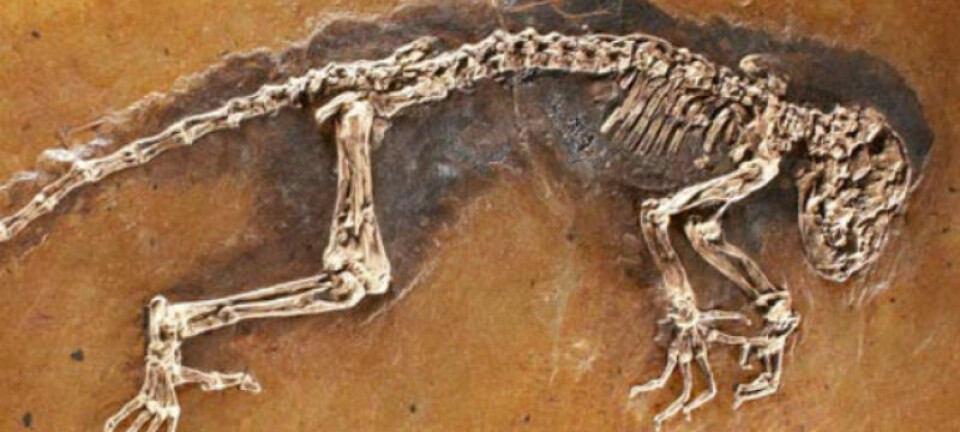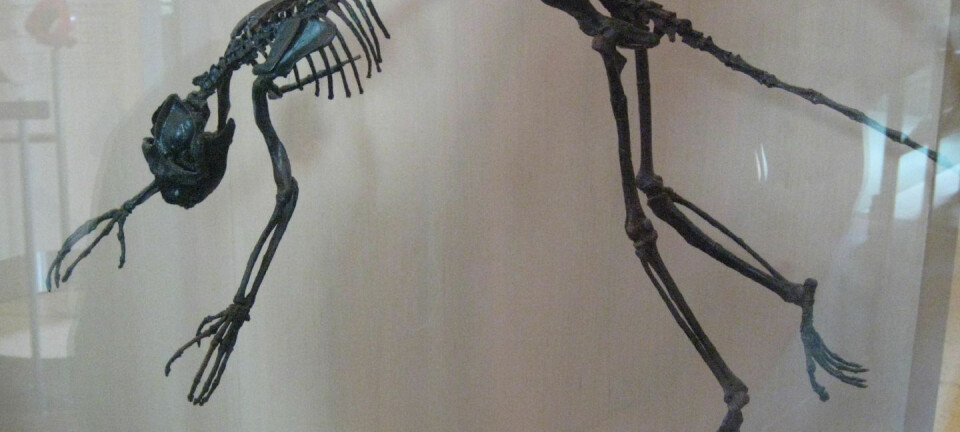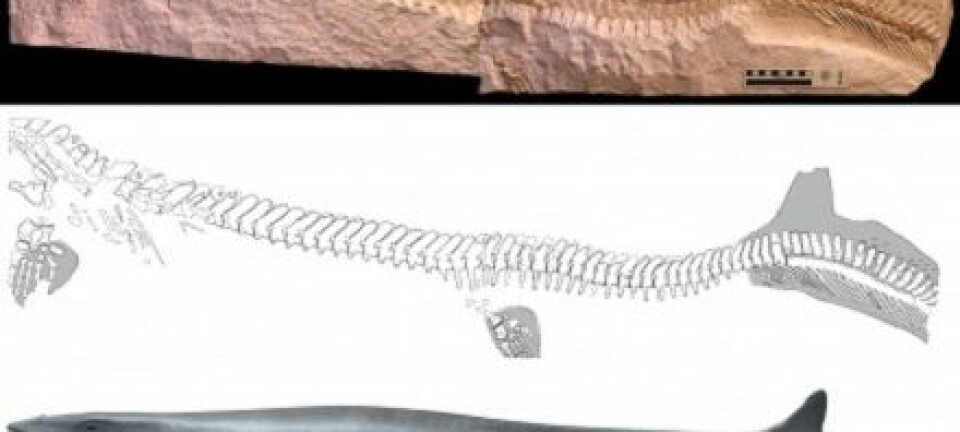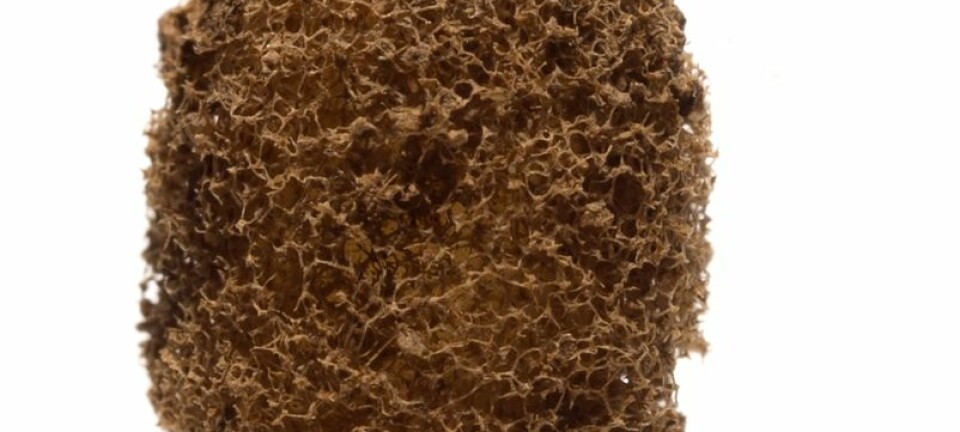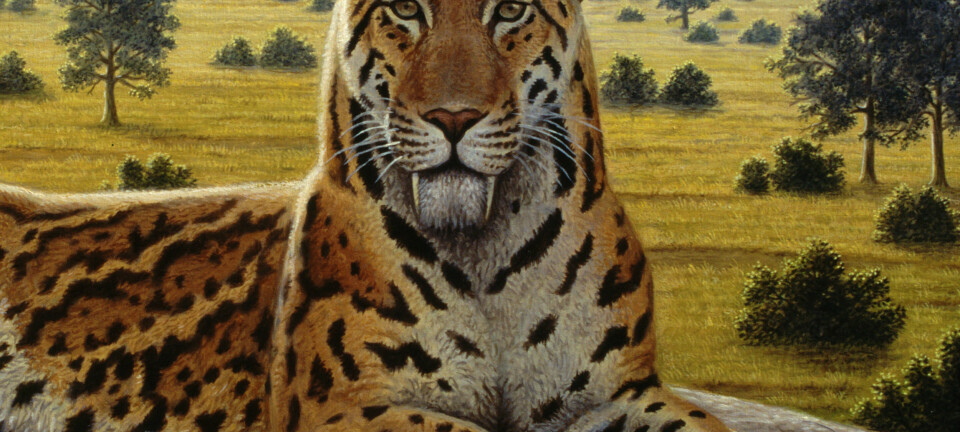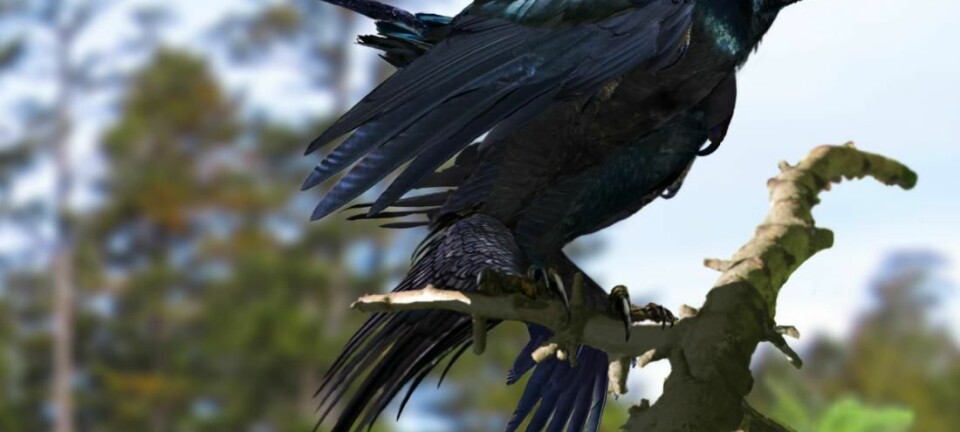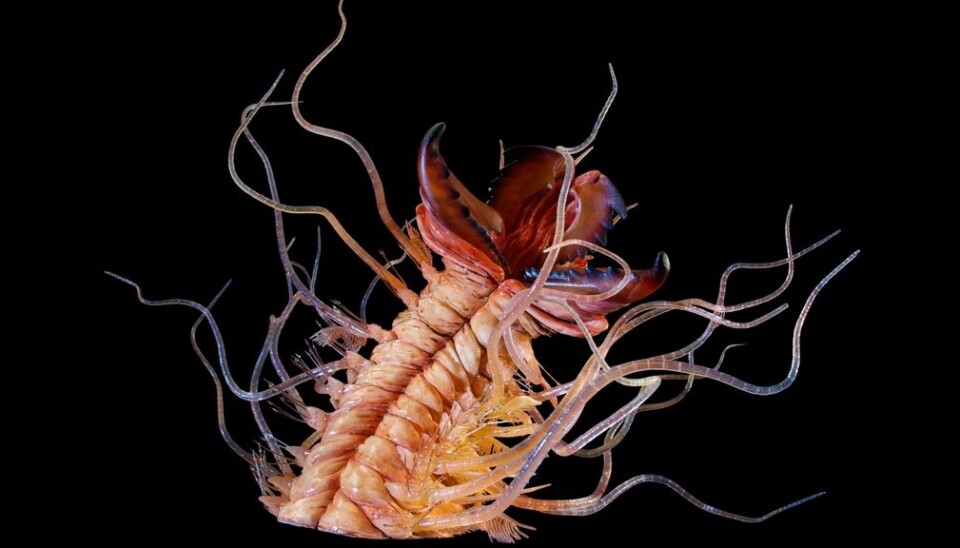
Exhibition fuses fossils with rock music
The term oldies in rock takes on a different meaning as heavy-rock polychaete annelid worm and Mark Knopfler’s dinosaur arrive at Oslo’s Natural History Museum.
Denne artikkelen er over ti år gammel og kan inneholde utdatert informasjon.
It started when professor and researcher Mats Eriksson at the Department of Geology at Lund University in Sweden ― an aficionado of heavy metal rock ― named two fossils after the heavy rockers King Diamond and Lemmy Kilmister.
Denmark’s Geomuseum Faxe picked up on the unorthodox names and decided to arrange a small exhibit, which originally consisted of nothing but two fossil reconstructions and some graphics.
Attention on the web
Nevertheless, the tiny exhibit got loads of publicity. Just a few searches on the internet are needed to show that these fossils and news of the exhibit spread round the world, especially in news pages and blogs dealing with heavy metal music.
“The exhibition shows maybe that palaeontologists have a little humour. And I think many of them like heavy music,” says Aubrey Roberts, a palaeontologist at Oslo’s Natural History Museum.

“You attract more attention for a fossil if it is named after a celebrity. A polychaete annelid might not be all that exciting for most people, but it’s cooler as soon as it gets a rock ’n roll name.”
A success factor could be the bewildering link between to fields that have nothing to do with one another.
“It might be the connection between people’s daily life and the much removed world of fossils.”
The Danish museum which initiated the exhibition made some highly detailed and meticulously accurate reconstructions of the rock fossils and a Danish designer agency constructed the show cases and the rock ’n roll air of the exhibition.
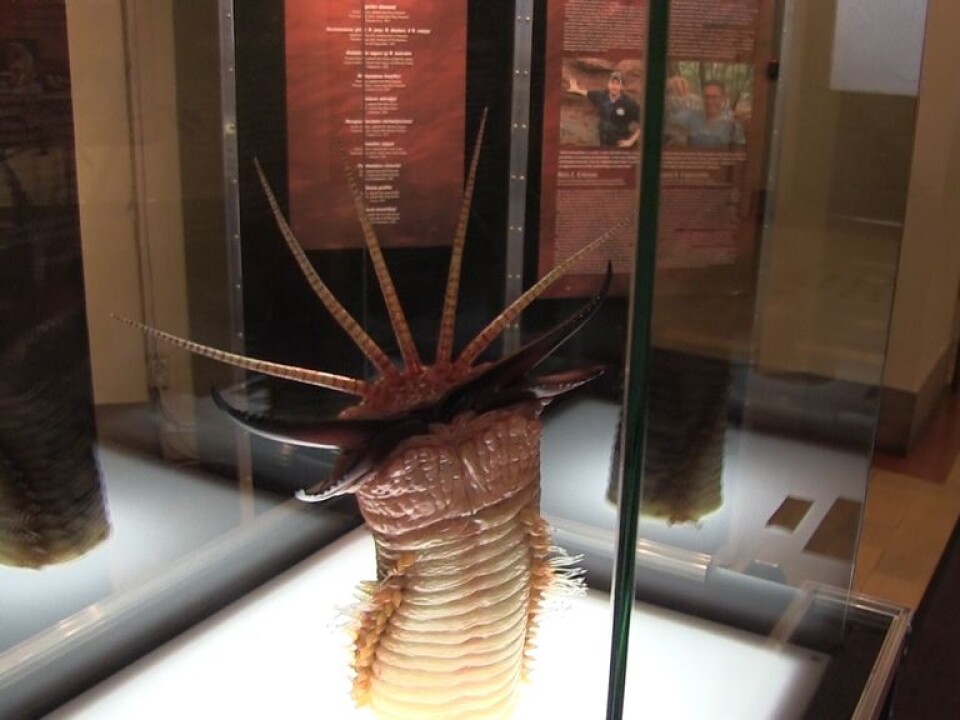
Although these fossils are named for heavy metal rockers, these are not ferocious dinosaurs or ancient colossal sharks ― just extinct worms.
Lemmy Kilmister and King Diamond
Kingnites Diamondi is named in honour of the Danish rock musician King Diamond, known for his occult texts and ear-splitting, hard-throbbing music.
The 420-million-year-old annelid worm had particularly large jaws (for a worm), which were about 4 millimetres long. The entire worm could grow to a length of about 50 cm.
The reconstructions are based on quite a few assumptions since the worms mainly consisted of soft tissue that left no fossil imprints. The only record palaeontologists have to go by is its jaws, which were made of the hard silicon material chitin.
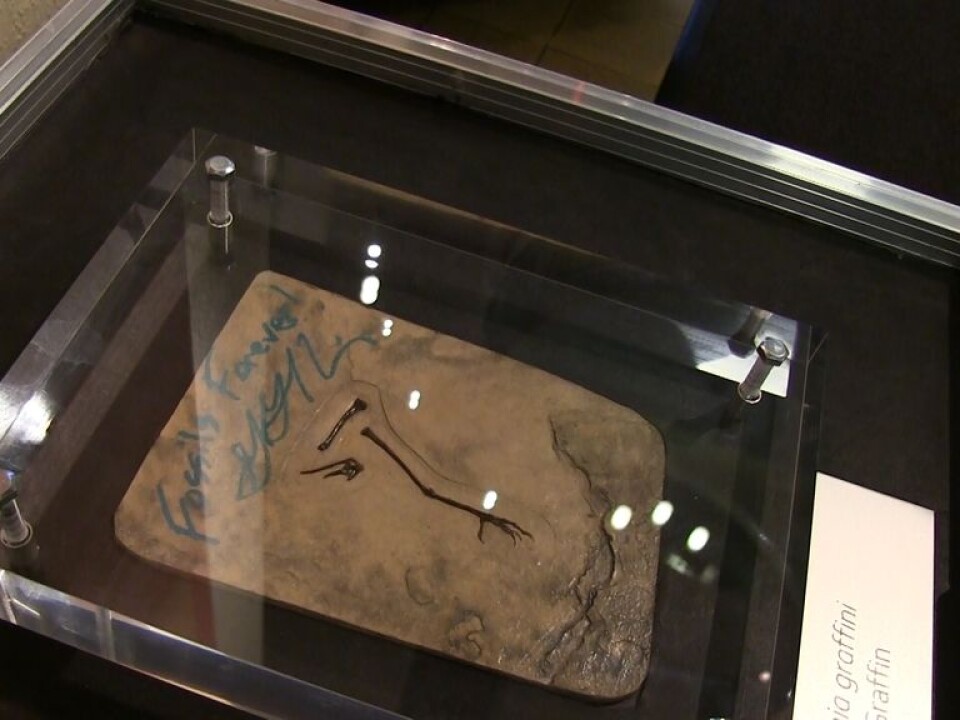
Kalloprion kilmisteri is the other annelid worm fossil reconstructed for the exhibition. The worm was named after Ian “Lemmy” Kilmister, the vocalist in the rather legendary British rock band Motörhead. This species also had special jaws which could be retracted into its soft body.
The exhibition that opened recently in Oslo has been expanded to display other fossils which have been named after rock and punk musicians.
Included is the family of trilobites named in honour of members of the Sex Pistols and a small bird fossil named for Greg Graffin, the vocalist in the punk band Bad Religion.
Appropriately, Greg Graffin is also a professor, working primarily with evolution. He signed his own fossil, which is included in the exhibition.
The Dire Straits vocalist and guitarist Mark Knopfler even managed to get a dinosaur named for him.
What to name the fossil?
A prime reason why such an exhibition could come about is the convention for naming creatures within zoology.
“It is kind of special that we are allowed to name finds after anyone we want,” says Roberts.
She says that the name has to be authorised according to stringent rules after a new species has been described, but the point of departure is that it isn’t deemed offensive.
The common denominator of all the fossils in the exhibition is that the scientists who classified the animals were particularly fond of rock music.
“The exhibition features a very diverse assortment of animals, but I think it’s really cool that we got it here,” says Roberts.
“It’s quite different than the other exhibitions we have in this building, and they are very fine objects.”
The exhibition, which is called “Heavy metal & Punk fossils”, lasts until 2 November 2014.
------------
Read the Norwegian version of this article at forskning.no
Translated by: Glenn Ostling







